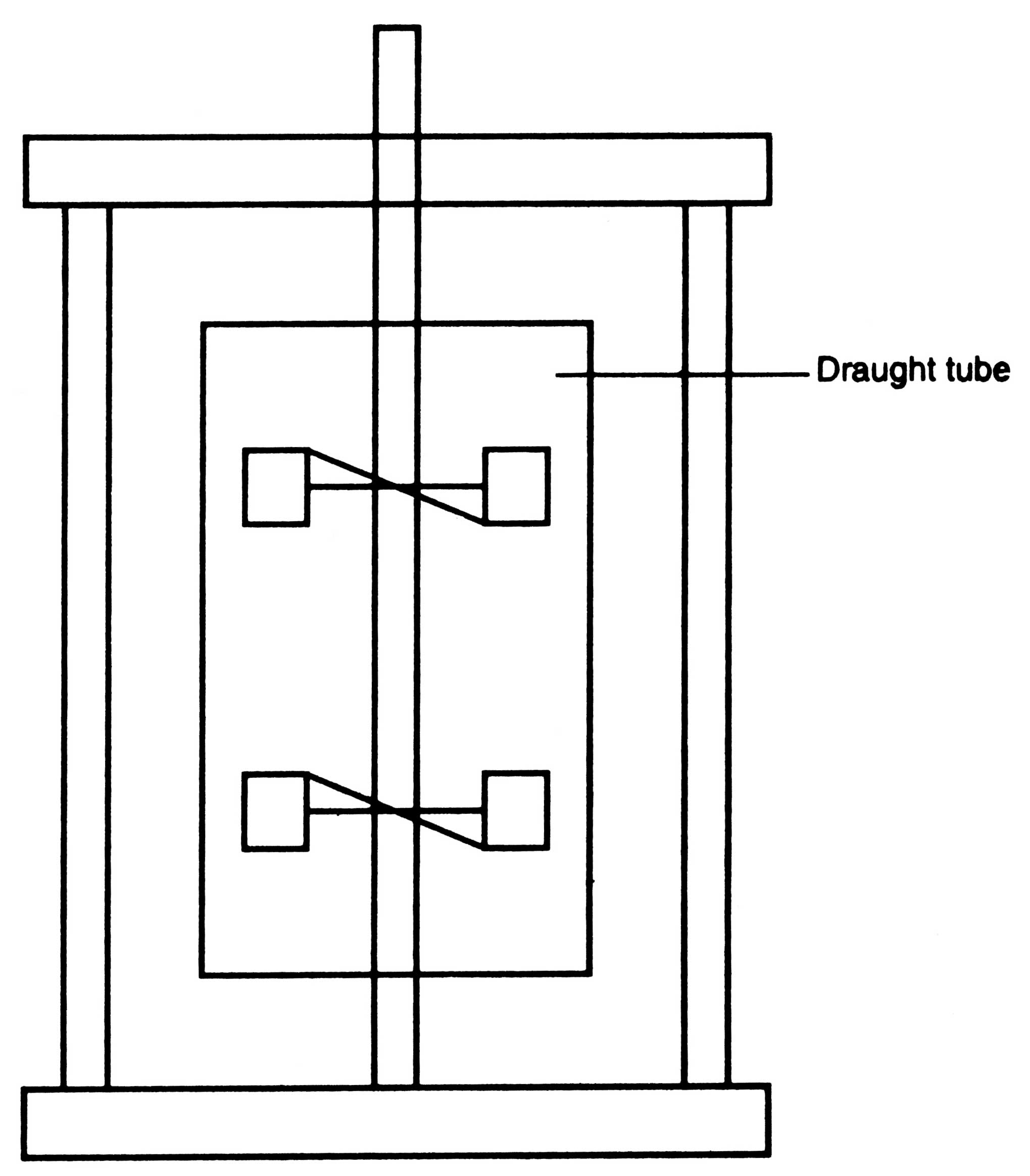Cultivation of Animal Cells En Masse in Bioreactor
The cells are cultivated in two different phases as freely suspended cells in liquid phase and immobilized cells on solid phase.Suspension Culture. In suspension culture the cells are dispersed in liquid medium and grow freely but not attached with any solid. The medium is agitated so that they should not form sediments. While adherent cells are permitted to get attached on solid support and they grow as immobilized culture. Therefore, it depends on choice of cells whether they are capable of growing freely in suspension or as immobilized culture (Anon, 1988).
A fully automated bioreactor is used that maintains the physicochemical and biological factors to optimum level and maintains freely the suspended cells in an agitated low viscous liquid medium. The most suitable bioreactor used is a compact-loop bioreactor that consists of marine impellers (Fig. 6.6). It also relies on the integrated monitoring and control of physical, chemical, biological and biochemical parameters.
Moreover, cell death also occurs due to certain reasons. Therefore, for measuring differences between viable and dead cells some enzyme activities are measured and correlated with cell density. Lactate dehydrogenase is used to distinguish cell density of viable cells (Fiechter, 1996).





